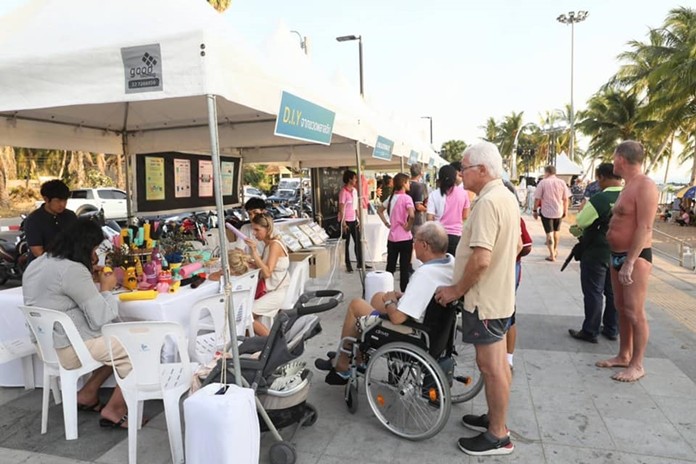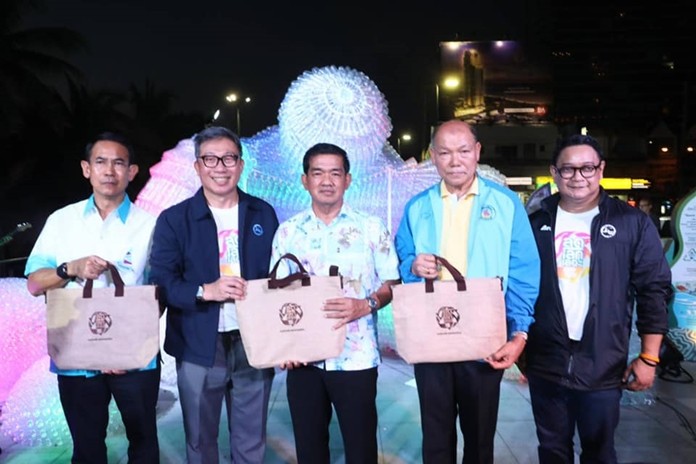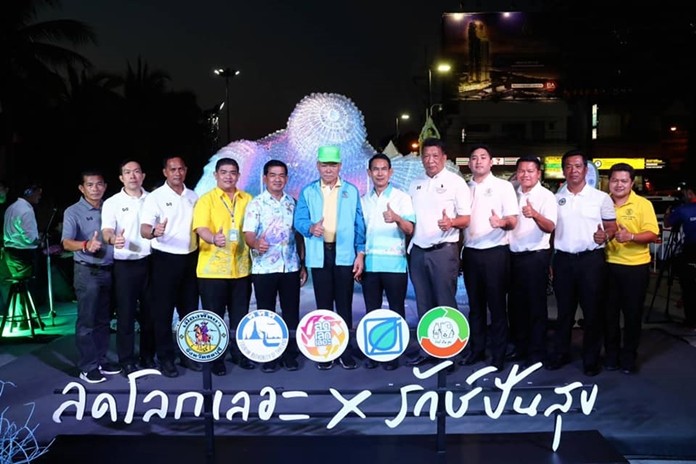
Jomtien Beach has an ironic new landmark, a sculpture of two leatherback turtles made of the very plastic that has helped put them on the endangered-species list.
An initiative of city hall, the Tourism Authority of Thailand and oil giant Bangjak Corp. Plc., the plastic “mother and child” sculpture was molded out of plastic water and beverage bottles collected at Bangjak gas stations to raise awareness about plastic pollution of the seas. Thailand is the world’s fifth-biggest ocean-plastic polluter.
Deputy Mayor Manote Nongyai unveiled the sculpture at the Dongtan curve Dec. 18. It will remain on display through June.
The leatherback is the largest of all living turtles and is the fourth-heaviest modern reptile behind three crocodilians. It can easily be differentiated from other sea turtles by its lack of a bony shell. Instead, its carapace is covered by skin and oily flesh.
Worldwide, the leatherback is considered a “vulnerable” species and import/export of the animal or its parts is banned by global treaty. However, the species’ western Pacific subgroup is classified as “critically endangered” with its population in Thailand and Malaysia nearly obliterated by human raids of egg nests, boat strikes and plastic pollution.











